 High Triglycerides: Root Causes and Natural Support Strategies
High Triglycerides: Root Causes and Natural Support Strategies
Triglycerides are a form of fat in your blood that is stored for later energy use. While triglycerides are absolutely necessary, they can become a problem if you eat more calories than your body burns; you could end up with high triglycerides.
High triglycerides are a common health issue that about 25 percent of adults in the United States experience (1). High triglycerides can increase your risk of liver, pancreatic, kidney, and cardiovascular problems. The good news is that you can reduce your triglyceride levels and decrease the risk of related health issues naturally.
In this article, you will learn what triglycerides are. You will understand the problem with high triglycerides. I will discuss proper cholesterol and triglyceride ratios. You will learn about the risk factors for high triglycerides. I will explain the functional root causes of high triglycerides. I will share my top natural support strategies for high triglycerides.
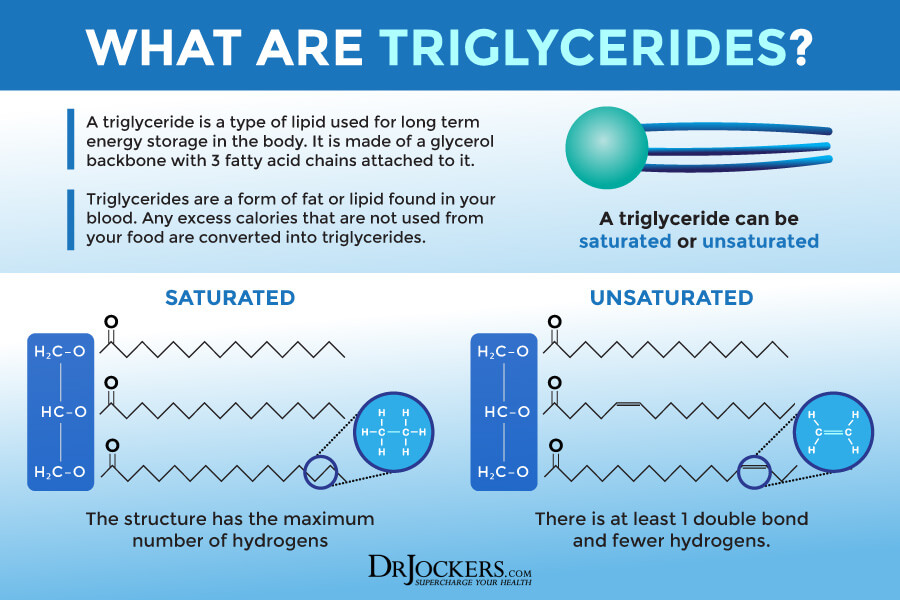
What Are Triglycerides
Triglycerides are a form of fat or lipid found in your blood. Any excess calories that are not used in your food consumption are converted into triglycerides. Since they are not needed immediately, triglycerides are stored inside your fat cells.
If your body needs energy between meals, certain hormones release these stored triglycerides. This is a very normal and necessary process. However, it can turn into a problem if you eat many more calories than your body can burn, and you develop high triglycerides.

The Problem with High Triglycerides
High triglycerides are also called hypertriglyceridemia. According to the Centers for Disease Control and Prevention (CDC), about 25 percent of adults in the US have high triglycerides over 150 milligrams per deciliter (mg/dL) (1).
High triglyceride levels are often linked to liver and pancreas issues. A 2012 study published in the Indian Journal of Endocrine Metabolism has found that high triglycerides may trigger acute pancreatitis (2). A 2014 research published in Biomedical Reports has found that high triglycerides may increase the risk of non-alcoholic fatty liver disease (3).
High triglycerides along with poor cholesterol may also affect your kidneys. A 2016 study published in the Journal of Clinical Medicine has found that elevated triglycerides and low HDL cholesterol may cause kidney issues (4).
High triglycerides may also increase the risk of heart disease. A 2018 study published in Nutrients has found that high triglycerides may increase the risk of cardiovascular disease (5). However, other research, including a 2011 review published in Atherosclerosis, Thrombosis, and Vascular Biology, has found that the relationship between triglycerides and cardiovascular issues is not clear (6). The link may be more complex, and we may have to consider other factors as well.
High triglycerides often occur along with other health issues, including high “bad” LDL and low “good” HDL cholesterol, high blood pressure, diabetes, and obesity. It can be difficult to know which health issues are caused only by high triglycerides and which ones are the result of other issues or the combination of many problems. No wonder that we, functional medicine practitioners, like to address the root cause of all issues instead of singling out just one problem.

Risk Factors for High Triglycerides
Risk factors for high triglycerides may include:
- Obesity
- Leading a sedentary lifestyle and a lack of exercise
- Eating more calories than you burn
- Eating a lot of processed foods
- Type 2 diabetes
- Kidney disease
- Hypothyroidism
- Smoking
- Excessive alcohol consumption
- Certain medications
- Some genetic disorders
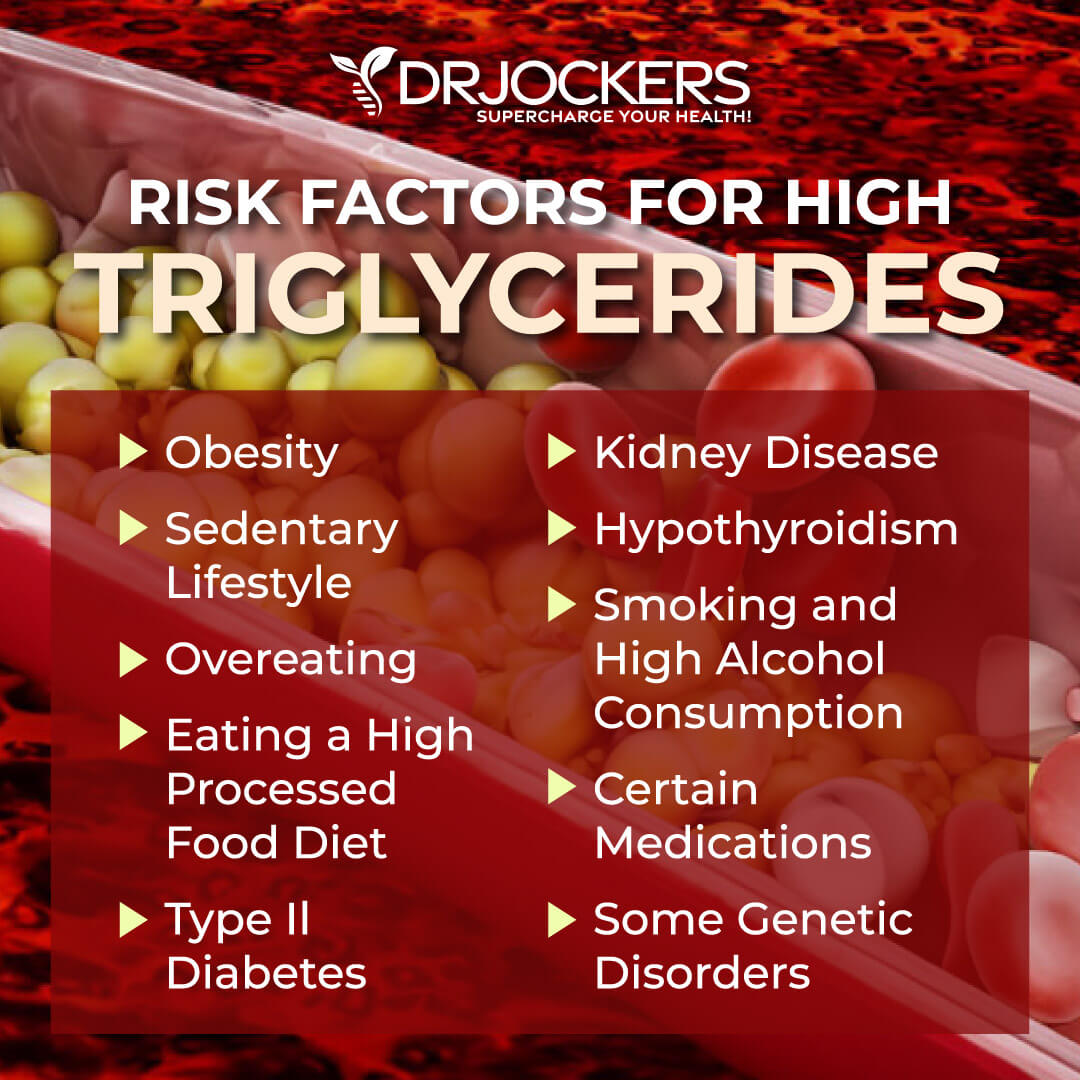
Proper Cholesterol and Triglyceride Ratios
According to the National Cholesterol Education Program, normal and high triglycerides levels may be defined normal triglycerides under 150 mg/dL, borderline high triglycerides between 150 and 199 mg/dL, high triglycerides between 200 and 499 mg/dL, and very high triglycerides 500 mg/dL and over (7). However, we must look at your cholesterol levels and cholesterol-triglycerides ratios to understand your health status and health risks.
Triglycerides and cholesterol are both fats and lipids in your blood. But they are different. As you’ve learned, triglycerides store calories inside our fat cells to be used for energy later. Cholesterol, on the other hand, is needed to build cells and create certain hormones.
HDL cholesterol, on the other hand, is also referred to as ‘good cholesterol’ because it helps to return cholesterol to the liver and prevent plaque in your arteries. HDL cholesterol is critical for reducing your risk of blood clots, heart disease, heart attack, and stroke.
LDL cholesterol is often referred to as ‘bad cholesterol. LDL transports cholesterol as well as fat-soluble nutrients like vitamins A, D, E, and K2 to your arteries. Certain types of LDL cholesterol are prone to oxidation in the artery walls. Oxidized cholesterol can lead to arterial plaque that limits blood flow and causes blood clots blocking blood flow to your brain or heart, risking a stroke or a heart attack.
There are 2 main types of LDL particles: small dense particles and large buoyant particles. The small, dense particles are common with insulin resistance, and they are more prone to oxidation and plaque creation. The large buoyant particles are more resistant to oxidation and are not considered a risk factor for cardiovascular disease.
The same factors, such as insulin resistance, that cause a propensity to develop small dense LDL particles also cause a rise in triglycerides. Simply lowering cholesterol levels with a medication doesn’t address oxidative stress and plaque formation. According to a 2011 study, published in Current Cardiological Reports, some people can have normal LDL cholesterol levels due to statin medications but still have high triglycerides and an increased risk of heart issues (8).
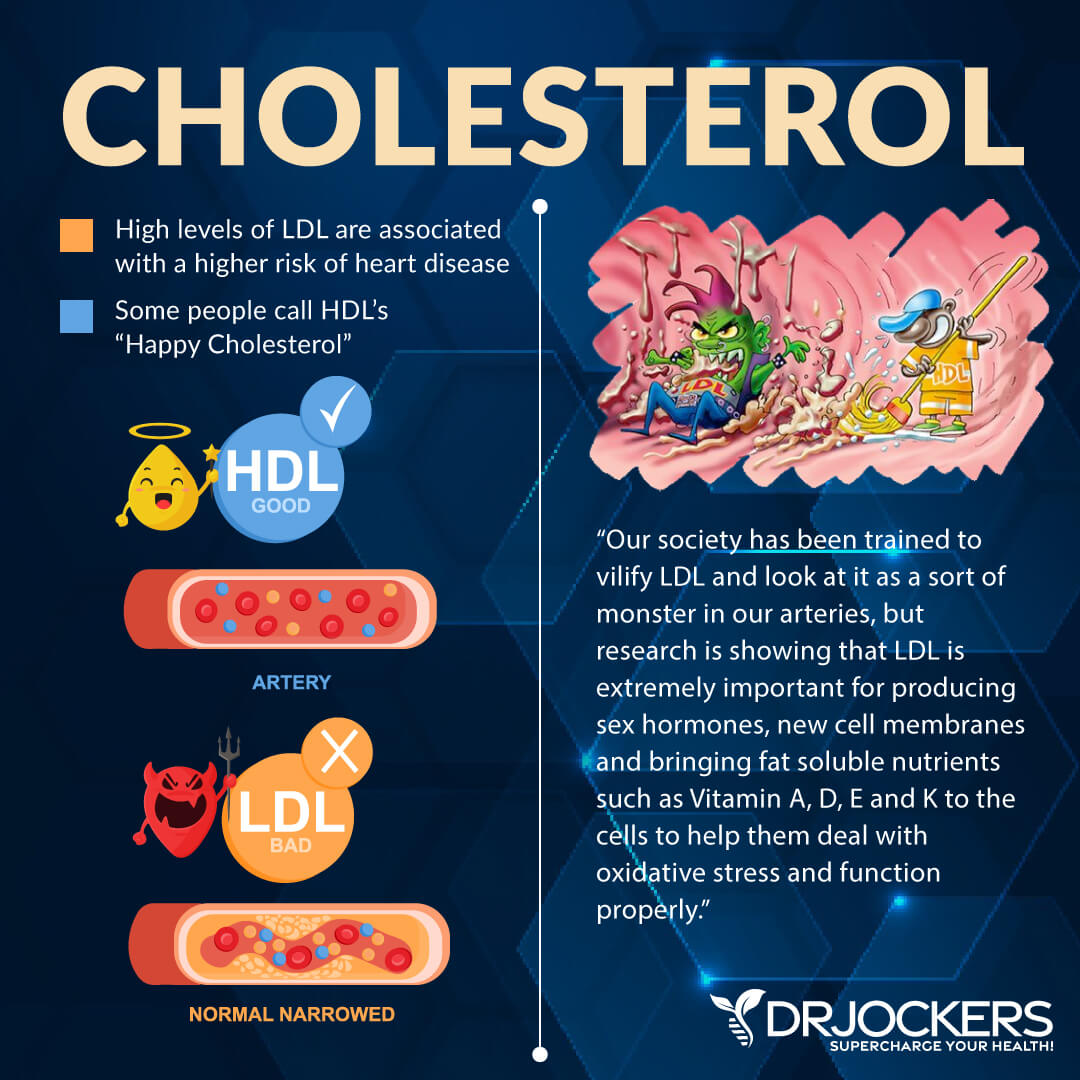
I recommend looking at all your lipid levels, including total cholesterol, LDL and HDL cholesterol, and triglycerides. I recommend the following guidelines for optimal markers:
Total Cholesterol:
- Good: < 300
- Moderately elevated: 300 – 339
- High: 340 or higher
- Low: Under 180
HDL Cholesterol:
- Ideal: 60 <
- Good: 50 <
- High: 90 or higher
- Low: < 50
LDL Cholesterol:
- Good: < 170
- Moderately elevated: 171 – 199
- High: 200 or higher
- Low: <100
Triglycerides:
- Ideal: 40-80
- Normal: < 100
- Moderately elevated: 100 – 149
- High: 150 or higher
- Very high: 500 or higher
However, these numbers still don’t tell the full picture. People with high triglycerides often have low HDL cholesterol. Looking at only the HDL number, we may miss some health risks. Looking at all the numbers but not the ratio between triglycerides and cholesterol, we may also miss some issues.
We should also look at your triglyceride and HDL cholesterol ratio. It is calculated by dividing your triglyceride results by your HDL cholesterol levels. Your triglycerides and HDL cholesterol ratio should ideally be under 2 and ideally close to 1 or even under 1. The higher your HDL or the lower your triglyceride levels are, the lower your ratio will be. Lower levels indicate lower health risks.
Guidelines I recommend for triglycerides and HDL cholesterol ratio (9):
- Ideal: under 2 and as close to 1 as possible
- High: over 2
- Very high: over 4
You may learn more about healthy lipid levels from this article.
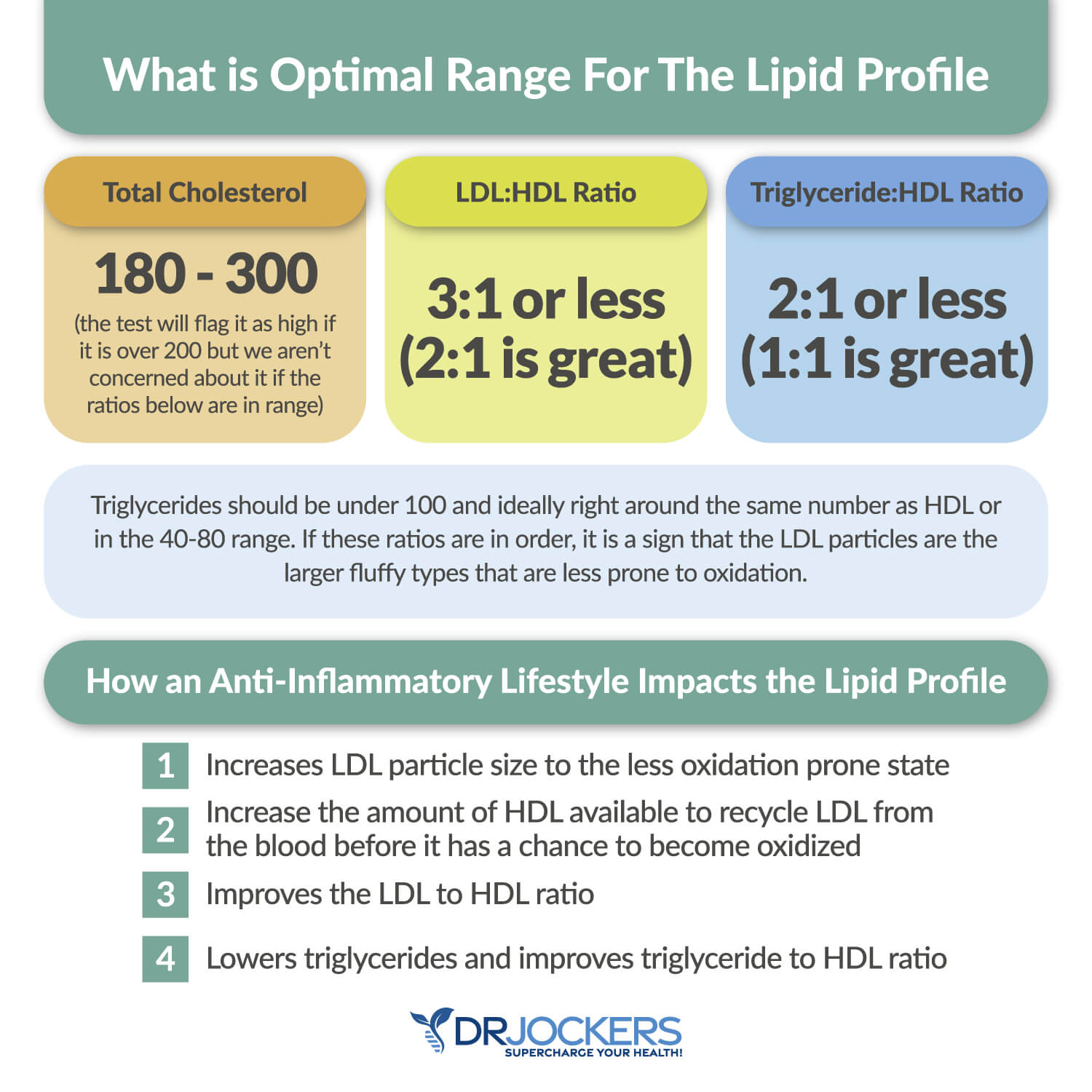
Major Lab Tests to Look At
To determine your risk factors for clogged arteries, I recommend a few major lab tests to look at. Getting a Comprehensive Blood Analysis is a great blood test that allows us to look at all these factors of your health.
Blood Sugar
I recommend looking at your blood sugar levels:
- HbA1C: The ideal number is between 4 and 5.2%. 5.3-5.6% is moderately high. Between 5.7 and 6.4 means that you have prediabetes and a high risk of developing diabetes, and over 6.4 means that you have diabetes.
- Fasting Glucose: Optimal levels are under 90 mg/dL. Less than 100 mg/dL (5.6 mmol/L) is considered normal. 100 to 125 mg/dL (5.6 to 6.9 mmol/L) is considered prediabetes. 126 mg/dL (7 mmol/L) or higher on two separate tests means you have diabetes.
- Fasting Insulin: Optimal fasting insulin levels are between 2-5 uIu/mL. Between 6-9 uIu/mL is early insulin resistance, and anything over 10 uIu/mL is insulin resistance. This won’t be flagged on the lab until it is over 24.9 uIu/mL, which is a state of severe insulin resistance.
Inflammatory Markers
I recommend looking at your inflammatory markers:
- HsCRP: The ideal number is under 1.
- LDH (lactose dehydrogenase): The optimal range is 140 to 180. High levels indicate chronic inflammation
- Serum ferritin: The ideal range is under 150. High levels indicate inflammation.
- Homocysteine: The optimal range is 6 to 9.
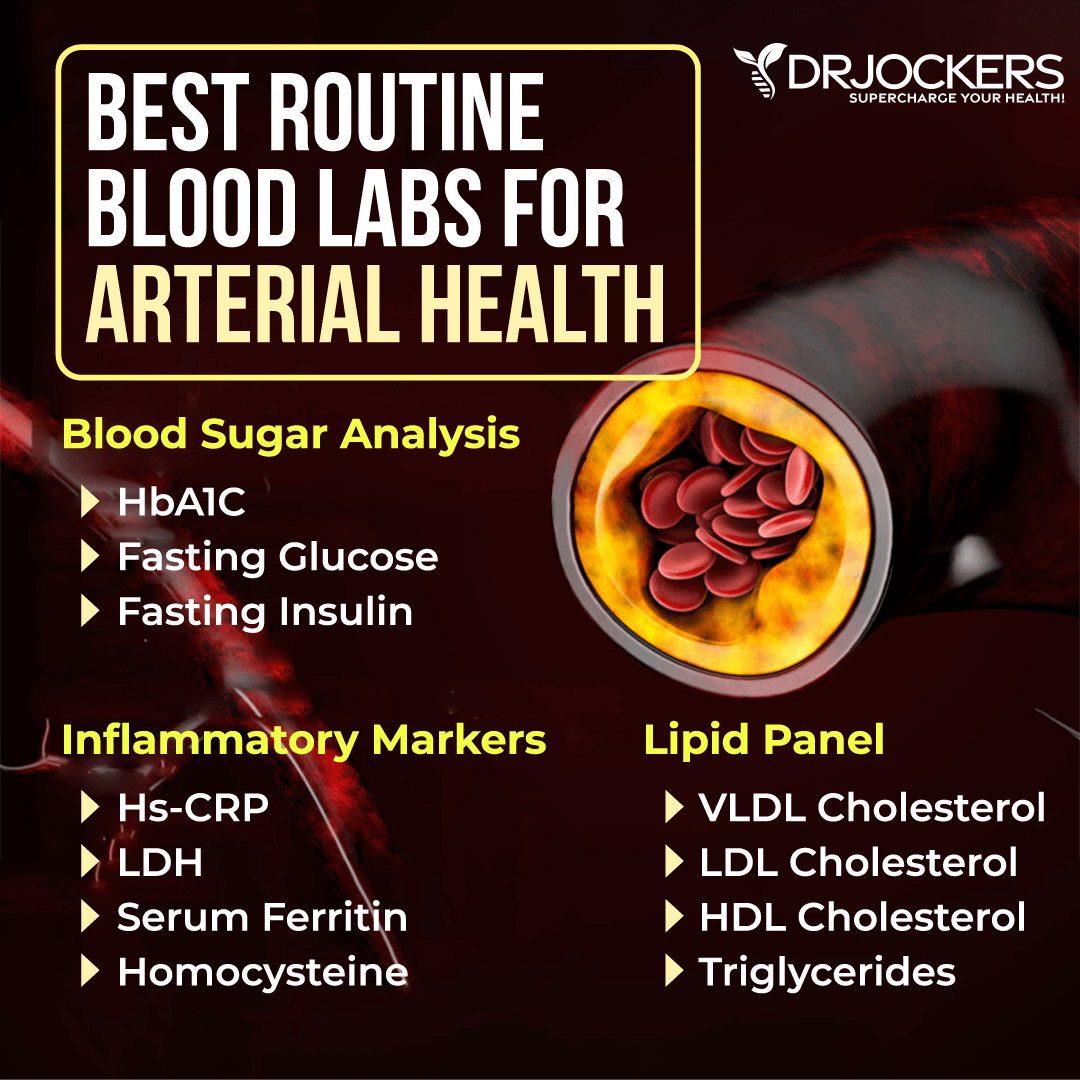
Functional Root Causes of High Triglycerides
Now that you understand the risk factors of high triglycerides, I want to discuss the functional root causes of high triglycerides. While these factors don’t necessarily cause high triglycerides, they can increase your risk of high triglycerides or increase the risk of health issues that may lead to high triglycerides.
These functional root causes of high triglycerides include insulin resistance, oxidative stress, inflammation, hypothyroidism, subclinical low thyroid, vitamin D deficiency, zinc deficiency, chronic infections, and certain medications. Let’s discuss each of these factors.
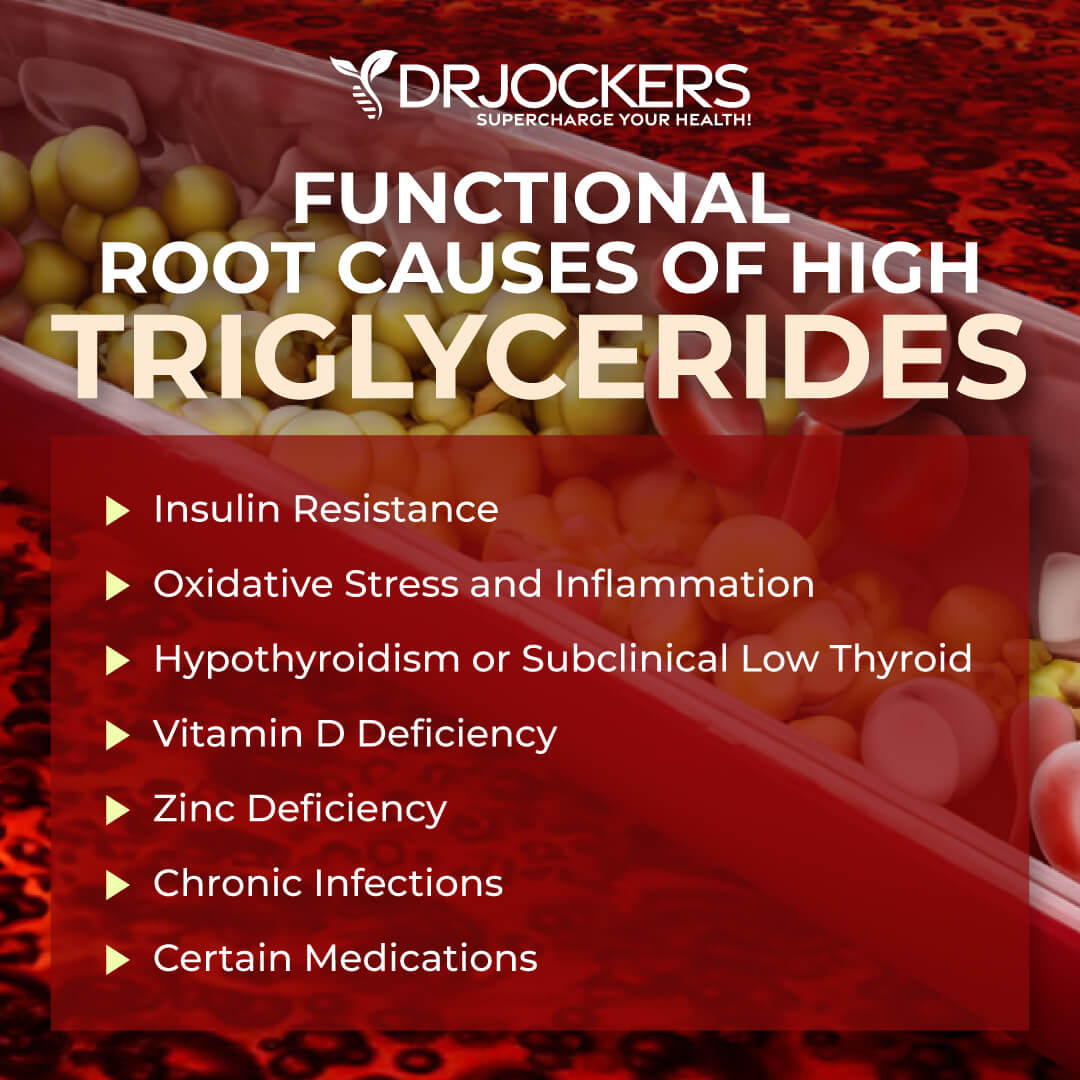
Insulin Resistance
Insulin resistance means that your body is unable to respond to insulin as well as it should, and as a result, it is unable to handle all your blood glucose. Insulin resistance can cause blood sugar issues and increase your risk of prediabetes and type 2 diabetes.
Insulin resistance may also increase the risk of high triglycerides. High triglycerides may also trigger insulin resistance, making the two possibly interlinked. A 2006 study published in Diabetes Care found a link between fasting triglycerides and insulin resistance (10). On the other hand, a 2005 study published in the Archives of Medical Research has found that regulating plasma triglyceride levels may improve insulin resistance and diabetes (11).
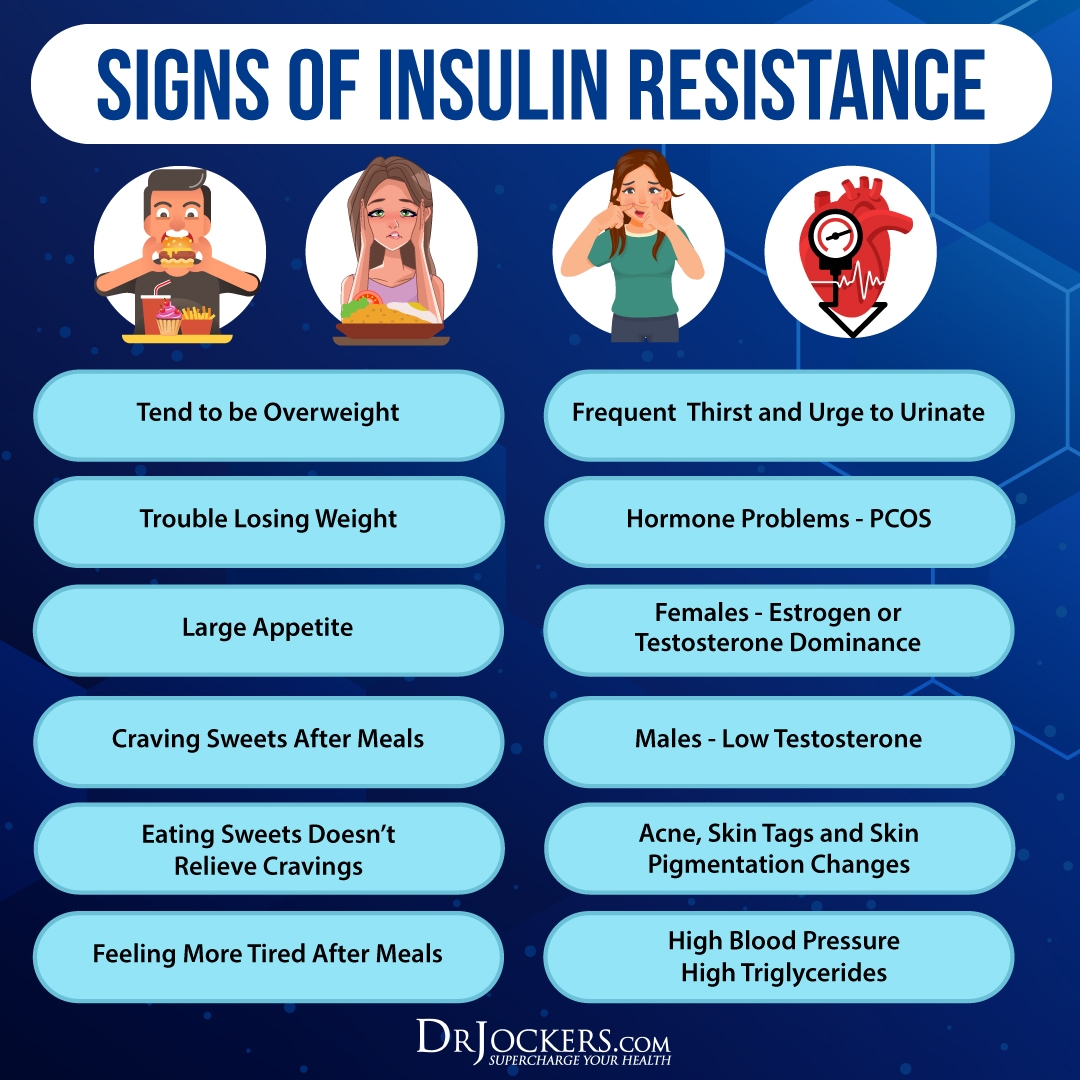
Oxidative Stress and Inflammation
Oxidative stress refers to a disturbance in the balance between free radicals, or reactive oxygen species, production, and your body’s antioxidant defense. Radiation, chemical exposure, car fumes, pollution, and pesticides are just some examples that can cause oxidative stress.
These factors, along with other poor dietary and lifestyle choices, can also increase chronic inflammation. Some factors that can cause chronic inflammation include refined sugar, refined oil, artificial ingredients, junk food, highly processed and, other inflammatory foods, poor sleep, high stress, lack of exercise, and environmental toxins.
Oxidative stress and chronic inflammation can both increase your risk of high triglycerides. A 2014 study published in Redox Report has found a link between oxidative stress and high triglycerides as a possible risk factor for subclinical atherosclerosis in those with prediabetes (12).

Hypothyroidism or Subclinical Low Thyroid
Hypothyroidism means that you have an underactive thyroid that is unable to produce enough thyroid hormone. In functional medicine, we don’t tend to wait until your numbers are bad enough to diagnose hypothyroidism.
If your numbers are in the low range of what’s considered normal, you have subclinical low thyroid that increases your risk of hypothyroidism and may already cause symptoms and health issues. This is when we ideally like to address the issue and prevent further problems.
Hypothyroidism and subclinical low thyroid levels can increase your risk of high triglycerides. A 2011 study published in The Open Cardiovascular Medical Journal has found that your lipid profile, including triglyceride levels and the triglycerides/cholesterol ratio, can be impacted by your thyroid function (13). A 2018 study published in Frontiers in Endocrinology (Lausanne) has also found a link between thyroid issues and lipid metabolism (14).
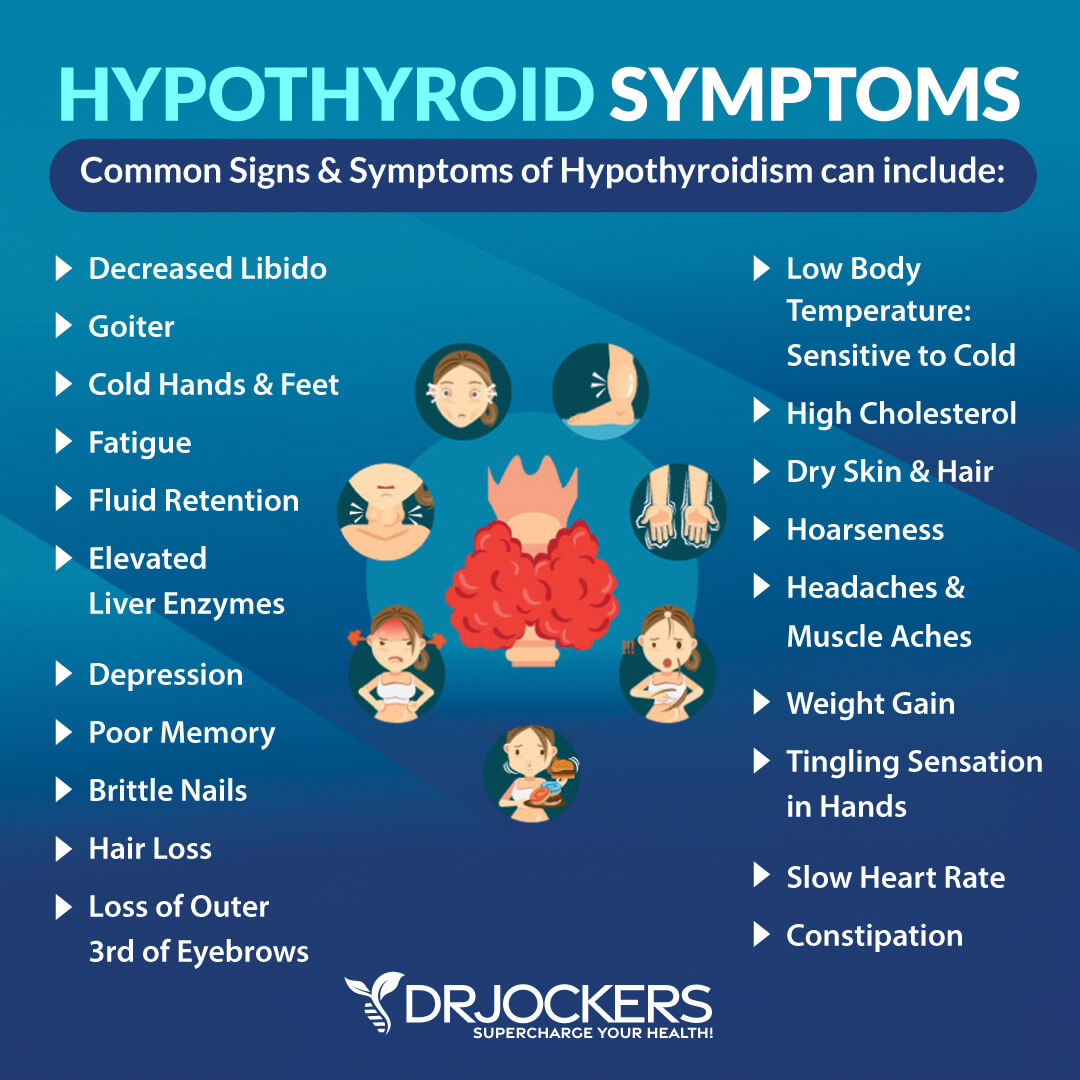
Vitamin D Deficiency
Vitamin D is an important vitamin for bone, muscle, and immune health. Your body synthesizes it from sunshine. It is also found in certain foods, including liver, fish, and eggs.
Vitamin D deficiency can increase the risk of high triglycerides, even at a young age. A 2019 review published in Metabolites has found that there is a link between poor vitamin D levels, high triglycerides, and high total cholesterol in non-obese children (15).

Zinc Deficiency
Zinc is an important mineral and an essential trace element. It’s critical for your immune health and metabolic function. It can be found in red meat, poultry, seafood, nuts, and beans.
Beyond poor immune health, zinc deficiency may also increase your risk of high triglycerides. A 2007 animal study published in The Journal of Nutrition has found that zinc deficiency may change lipid metabolism (16). According to a 2009 study, supplementation with zinc may improve triglyceride and cholesterol levels (17).

Chronic Infections
Chronic infections, including viral infections and oral infections, can also increase the risk of high triglycerides. A 2000 study published in Medicine has found that chronic inflammation, inflammatory conditions, and infections may compromise lipid metabolism (18). They found that chronic infections that may cause high triglycerides may include periodontal disease and HIV.
Lupus, psoriasis, and rheumatoid arthritis are among the inflammatory conditions that may increase the risk of high triglycerides. Since chronic infections, including the Epstein-Barr virus, small intestinal bacterial overgrowth (SIBO), candida, and parasites, are among the possible triggers and root cause factors of these issues, these infections may also contribute to issues that can cause high triglycerides.

Certain Medications
Lastly, according to a 2018 scientific article published in Endotext, certain medications can also increase your risk of high triglycerides (19).
These medications may include blood pressure medications, corticosteroids, HIV treatments, antipsychotics, isotretinoin for acne, and estrogen treatment.
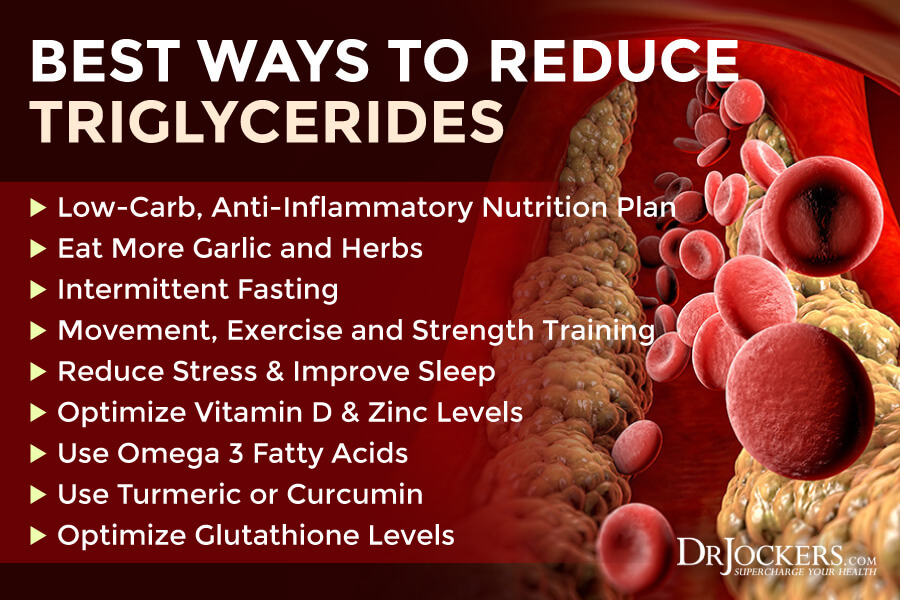
Natural Support Strategies for High Triglycerides
Improving your triglyceride levels naturally is simple. My natural support strategies for high triglycerides include dietary strategies, lifestyle strategies, and supplementation. Here are the natural support strategies I recommend for high triglycerides:
Anti-Inflammatory Nutrition Plan
Eating an inflammatory diet can increase your risk of high triglycerides. For example, according to a 1986 study published in the American Journal of Physiology, eating too much sugar can increase triglyceride levels (20). A 2000 study published in the Proceedings of the Society for Experimental Biology and Medicine has also found that eating a high carbohydrate diet can increase triglycerides (21).
Instead, I recommend an anti-inflammatory nutrition plan. Remove refined sugar, refined oil, artificial ingredients, additives, junk food, and processed food. Follow a lower-carb diet with lots of healthy fats and moderate clean protein.
Eat plenty of greens, vegetables, fermented food, herbs, spices, low-glycemic index fruits, nuts, seeds, grass-fed beef, pasture-raised poultry and eggs, grass-fed butter and ghee, wild-caught fish, and wild game.
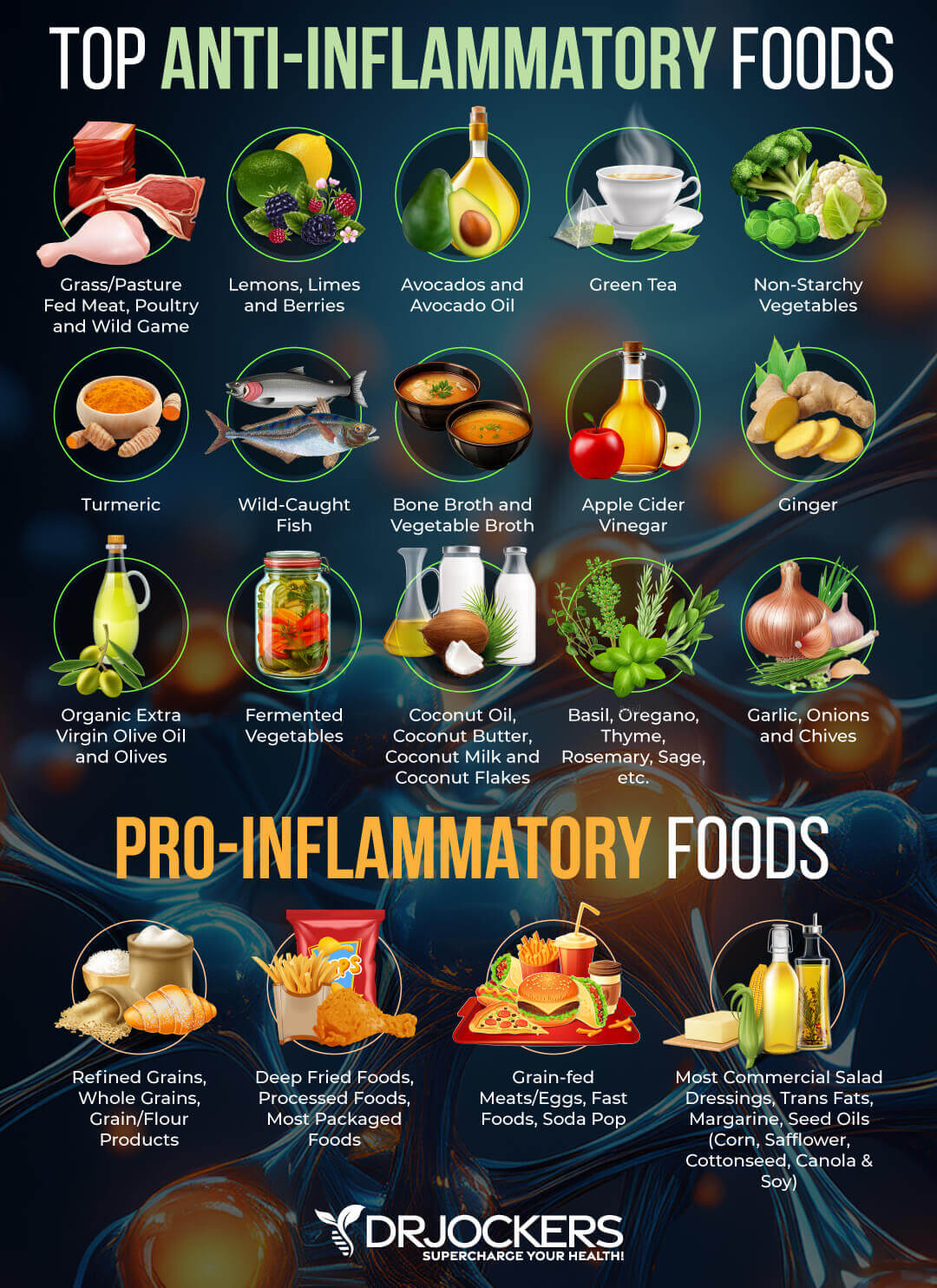
Eat More Garlic
Adding more garlic to your diet may also help reduce your triglycerides. A 2006 study published in the Journal of Nutrition has found that eating garlic may help to lower your triglyceride levels, as well as your cholesterol and blood sugar levels (22).
A 2012 meta-analysis published in the Journal of Science of Food and Agriculture has found that garlic may help to improve your lipid profile (23). If you have high triglycerides, it is advisable to try adding garlic to your foods, and you can even consider taking garlic extract supplements. Here is a helpful article on 6 ways to use garlic in your diet.
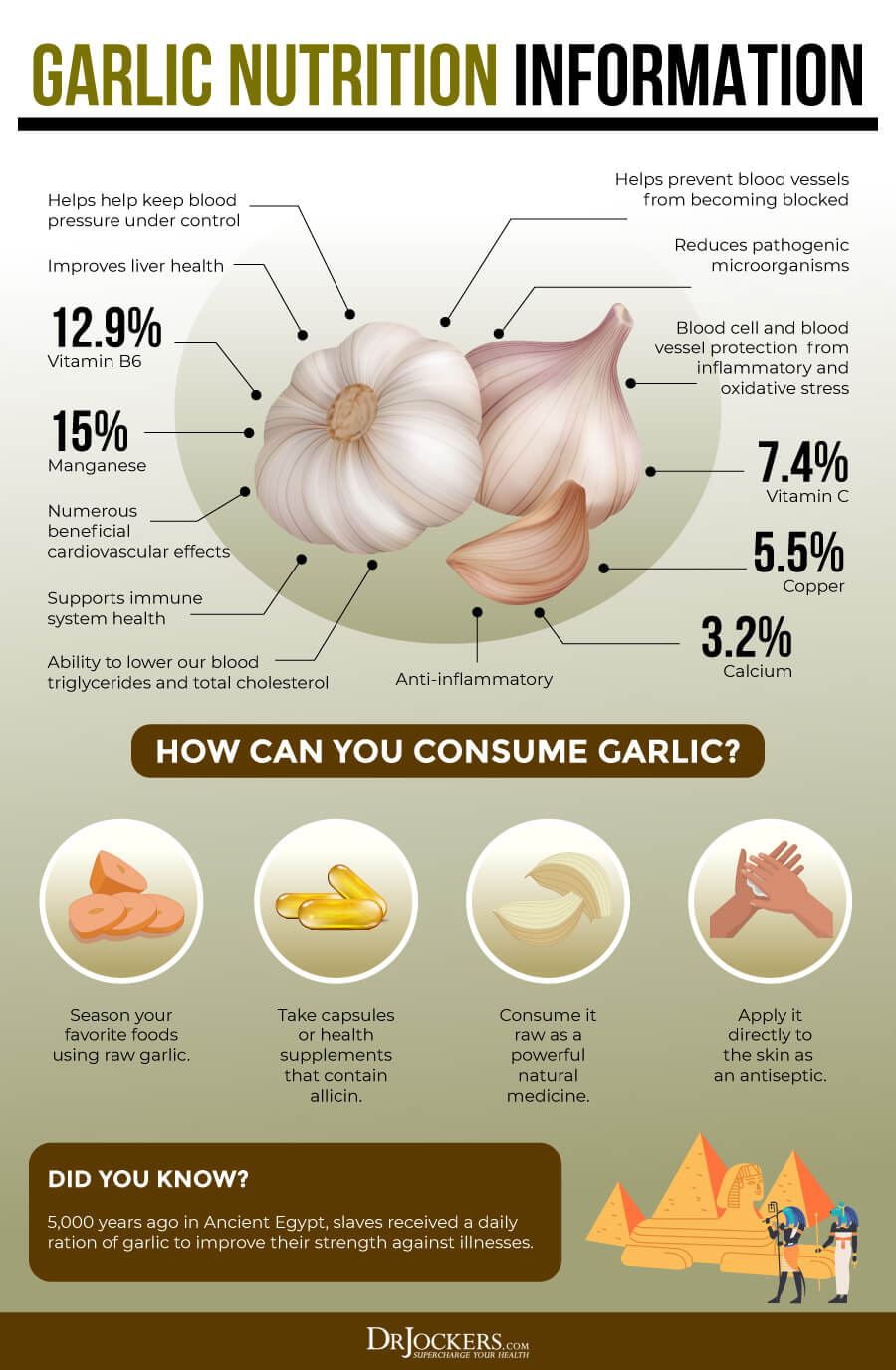
Intermittent Fasting
Intermittent fasting is a way of eating that alternates between a period of eating (feasting) and not eating (fasting) within one day. It is a fantastic way to reduce inflammation, improve insulin resistance, support cellular autophagy, and reduce your risk of chronic symptoms and health issues.
A 2010 study published in Obesity (Silver Spring) has found that alternate-day fasting, a form of intermittent fasting, can reduce coronary health risks, including triglycerides (24). A 2007 study published in JAMA has found that a fasting state can benefit triglyceride levels and reduce the risk of cardiovascular events (25).
If you are new to intermittent fasting, start with 12 hours of fasting, including your overnight sleep. For example, if you eat dinner at 6 PM, stop eating after 12 hours, and you will be ready to eat again at 6 AM the next day. Increase your fasting period over time.
You will notice that delaying breakfast until 7 AM, 8 AM, or even 10 AM will come naturally to you over time. Most people feel best with 16 hours of fasting a day. To learn more about intermittent fasting, I recommend reading this article.

Regular Movement and Exercise
As you’ve learned earlier in this article, obesity and a sedentary lifestyle as both serious risk factors for high triglycerides. I recommend that you move your body daily and exercise regularly for at least 20 to 30 minutes, 5 days a week. I recommend that you take regular walks and also make walking part of your daily routine.
Walk to your neighbors or stores nearby instead of driving. Take the stairs. Park further from the store entrance to get some steps in. Go for nature walks or a stroll around the neighborhood.
Along with walks, strength and resistance training are also critical. A 2019 systematic review and meta-analysis published in the Journal of Physical Activity and Health has found that strength training can improve lipid levels and reduce inflammatory issues (26).
You may try bodyweight exercises, free weights, weight machines, resistance bands, kettlebells, TRX suspension trainers, Pilates, or other strength training workouts. Many of these workouts can be done from your home; however, working with a trainer at first may help with the proper form.
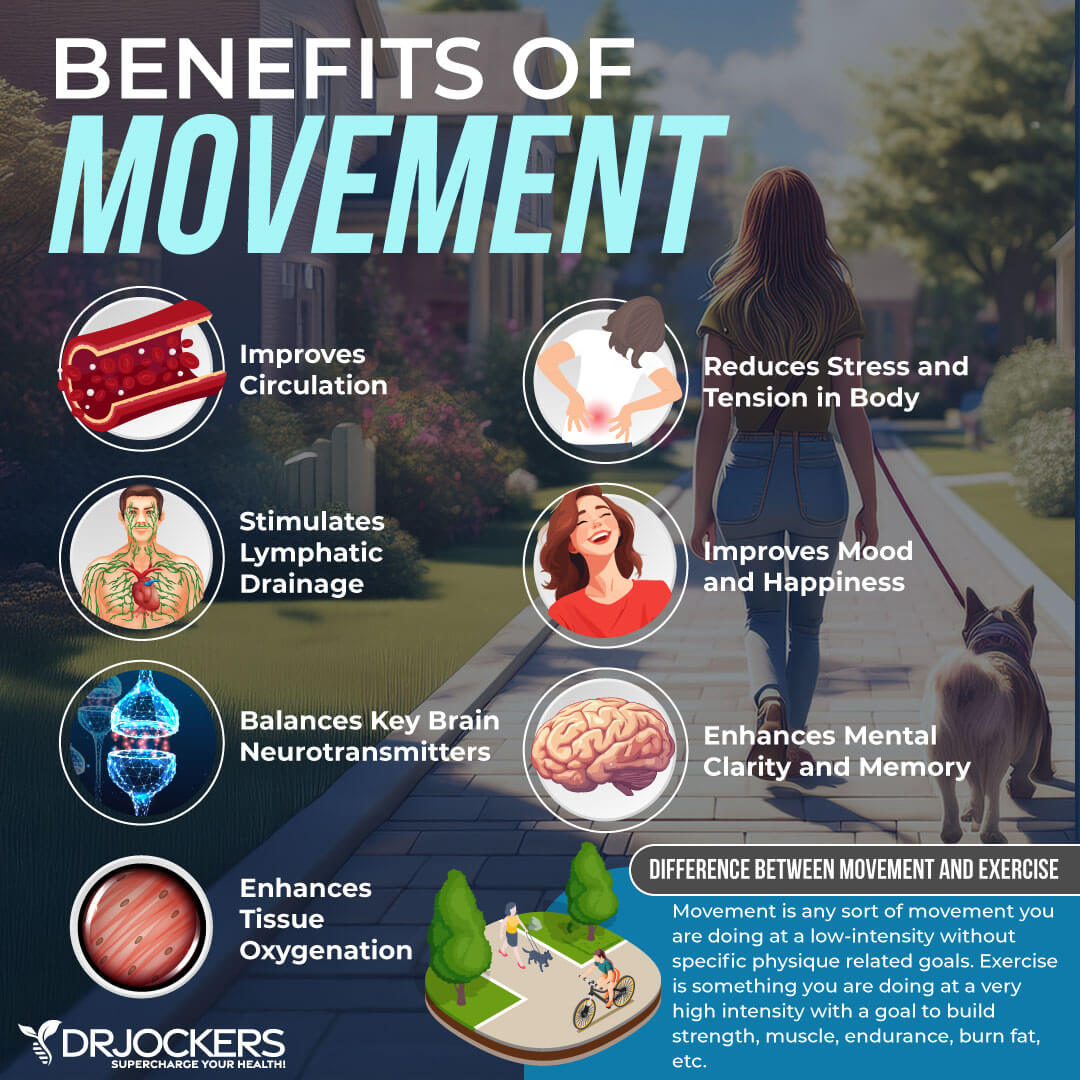
Reduce Stress & Improve Sleep
You’ve already learned that chronic inflammation can cause high triglycerides. Chronic stress and poor sleep are common underlying causes of chronic inflammation. A 2017 study published in Medicine (Baltimore) has found that psychological stress can negatively impact your lipid profile (27). A 2008 study published in Sleep has also found that poor sleep may also affect your lipid levels, including triglycerides (28).
To reduce stress, I recommend that you practice meditation, breathwork, muscle relaxation strategies, gratitude, journaling, stretching, reading scripture, and prayer. Spend time in nature. Seek support and uplifting activities with friends and family. Have some dedicated me-time as well.
To improve your sleep, I recommend that you develop a relaxing bedtime routine that works for you. Turn down electronics and avoid sugar, heavy foods, and alcohol for several hours before going to sleep.
Reading, crossword puzzles, journaling, listening to calming music, and meditation are great ideas to calm your mind and get ready for deep and restorative sleep. Follow a regular sleep schedule that supports your body’s circadian rhythms. Invest in a supportive bed and comfortable bedding, and pillows. Make sure to sleep 7 to 9 hours a night.

Optimize Vitamin D Levels
Vitamin D deficiency may increase the risk of high triglycerides. According to the 2019 systematic review and meta-analysis published in Nutrition Review, supplementing with vitamin D may improve your lipid profile (29).
To optimize your vitamin D levels, I recommend spending time out in the sun and eating vitamin D-rich fatty fish, egg yolks, and beef liver. However, sunshine and food are not enough. I recommend daily supplementation with vitamin D3.
Pairing vitamin D3 with vitamin K2 helps improve calcium absorption and control inflammation. I recommend taking a vitamin D3 supplement with at least 3,000-5,000 IUs of vitamin D3 and at least 90 mcg of vitamin K2. I highly recommend Vitamin D3/K2 Power. Both of these supplements support your immune, skin, cardiovascular, and bone health.
Typically, taking 1,000 IU per 25 lbs. of body weight will help you get your levels into a healthy range. You want to test your vitamin D levels at least 1-2 times each year and get your levels between 50-100 ng/ml. It has been hypothesized that a therapeutic level for major health conditions is going to be between 70-100 ng/ml.
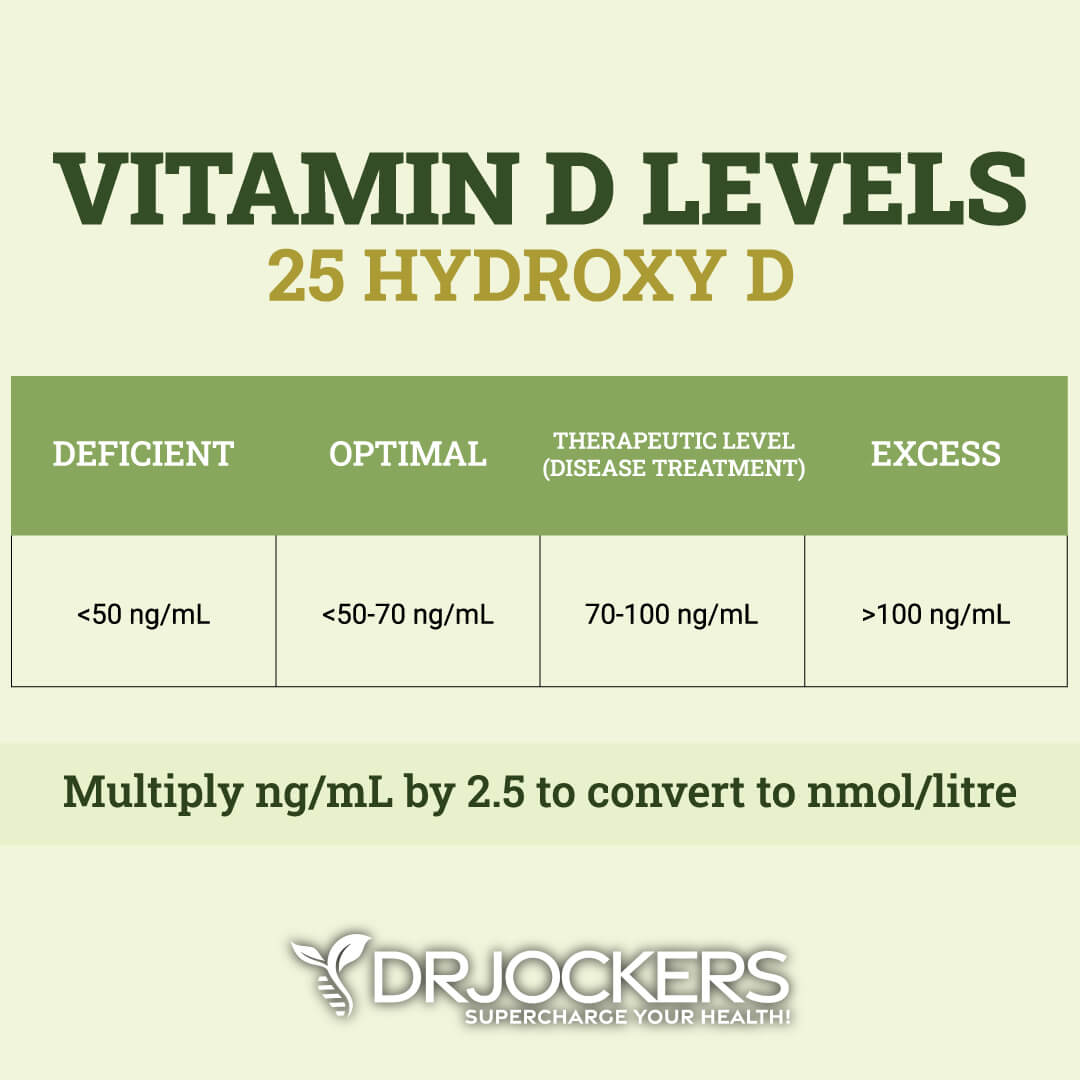
Optimize Zinc Levels
Zinc deficiency may contribute to high triglycerides. According to a 2015 systematic review and meta-analysis, supplementing with zinc can improve your lipid profile (30).
Checking your plasma zinc levels is the best way to determine zinc levels in your body. Ideal plasma zinc levels are between 90–135 ug/dL and for serum copper it should be 70–110 ug/dL. Zinc and copper compete against each other as antagonists to regulate physiological pathways.
A proper balance between the two is essential for maintaining good health. I recommend checking your plasma zinc and serum copper levels and their balance. The proper zinc: copper ratio should be between 1-1.2.
I recommend that you consume plenty of zinc-rich foods, including meat, poultry, and seafood. Additionally, I recommend daily zinc supplementation, such as Zinc Charge.
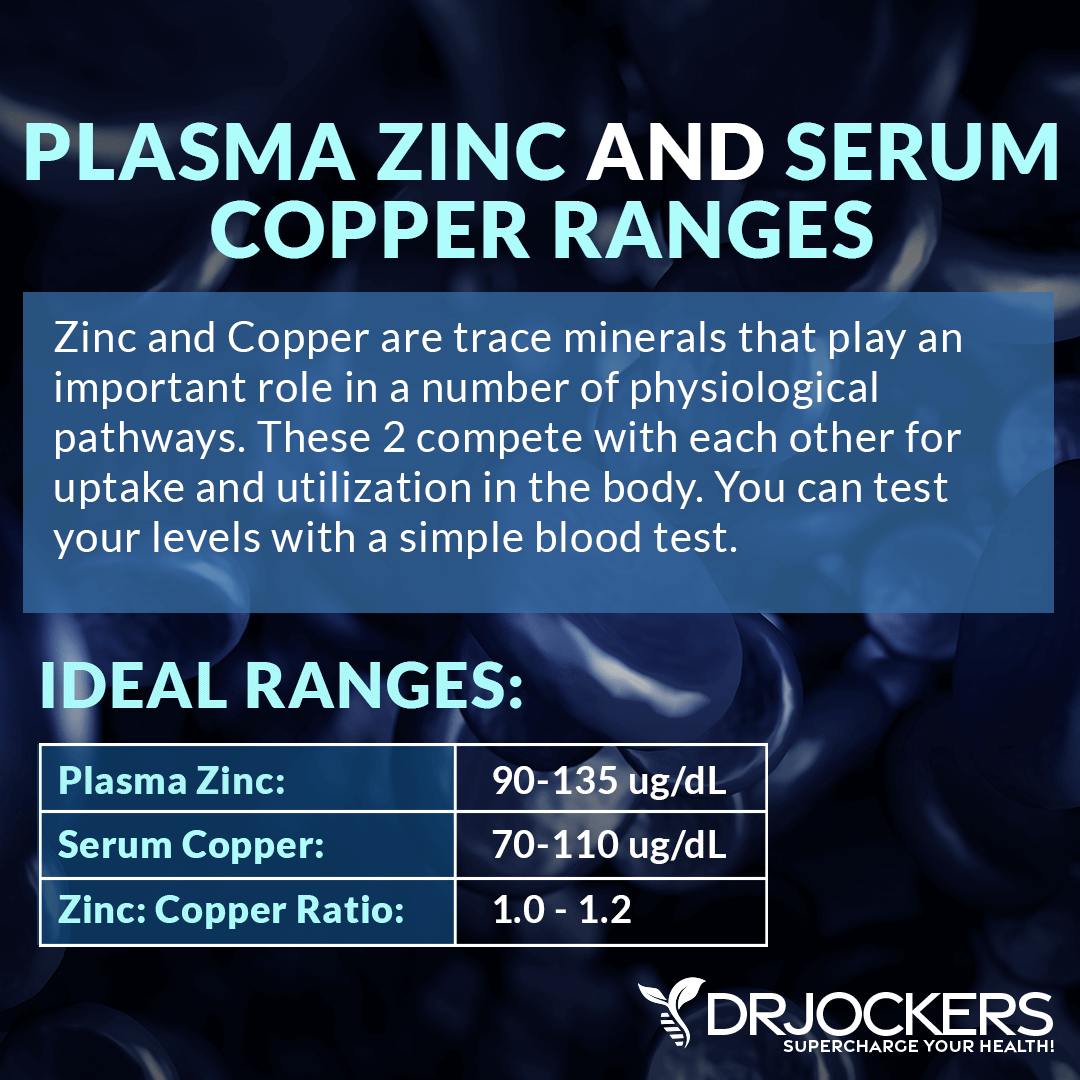
Use Omega-3 Fatty Acids
Chronic inflammation can increase the risk of high triglycerides. No wonder that anti-inflammatory omega-3 fatty acids may help to reduce them. A 2019 research published in Circulation has found that omega-3 fatty acids with both DHA and EPA can be effective in the management of high triglycerides (31). Using 4 grams of omega-3 with DHA and EPA a day they found about a 30 percent reduction of triglycerides. They also found lower cholesterol levels, lower risk of cardiovascular disease, and a 25 percent reduction in major cardiovascular events with the same dose.
I recommend that you eat plenty of omega-3-rich foods, including fish, seafood, and algae. Additionally, I recommend supplementing with a high-quality omega-3 fish oil supplement, such as ProOmega Curcumin, daily.
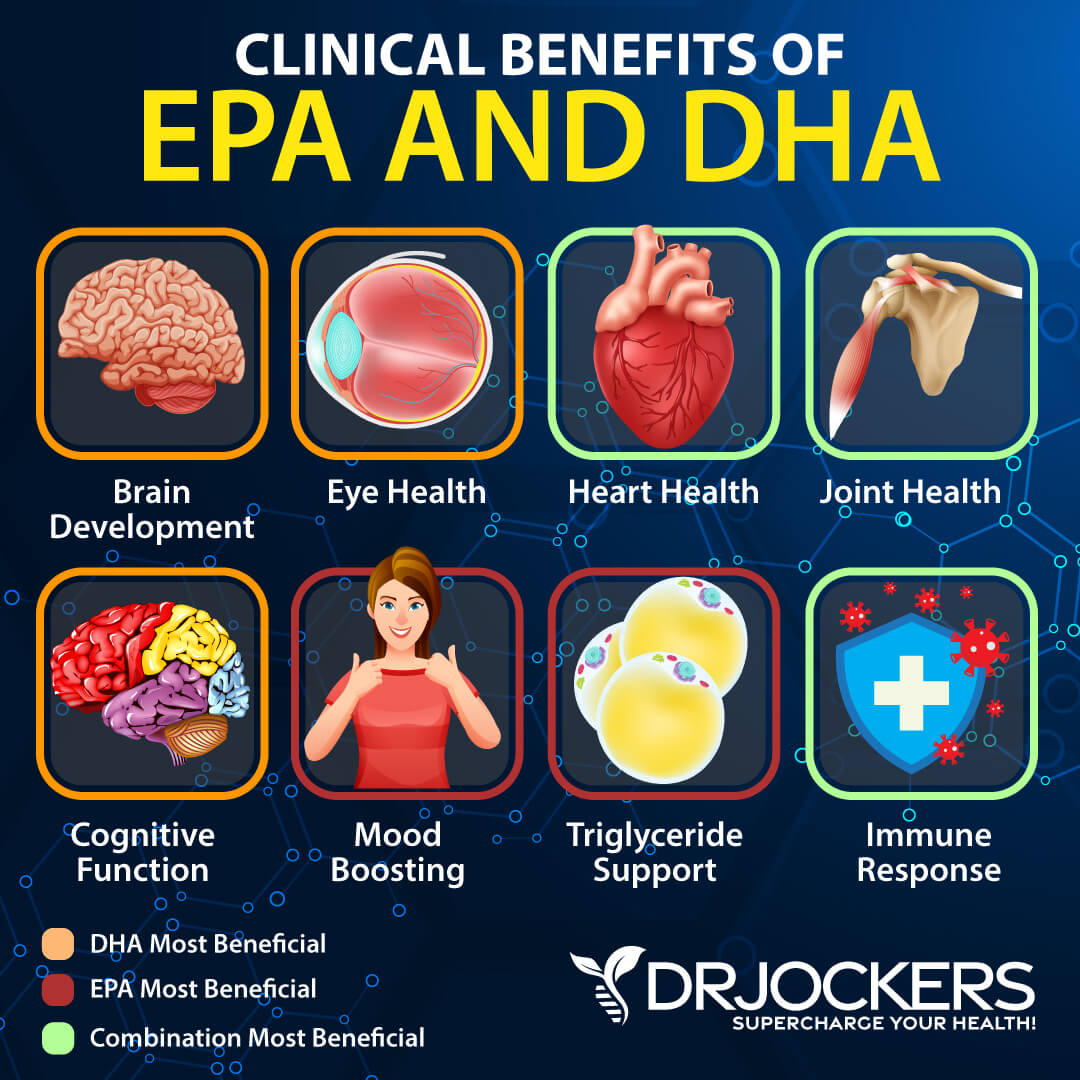
Use Curcumin
Curcumin is the active compound of the spice turmeric. It is one of the most studied herbs for its anti-inflammatory and other health benefits. Since curcumin can reduce inflammation, it may reduce one of the major underlying functional root causes of high triglycerides.
A 2014 randomized, double-blind, placebo-controlled trial has found that curcumin can reduce high lipid levels in those with metabolic syndrome (32). A 2017 meta-analysis of randomized controlled trials published in Nutrition Journal has found that curcumin and turmeric can decrease lipid levels in those with cardiovascular disease (33).
I recommend that you use turmeric regularly in your cooking. You can add it to your curries, soups, stews, baked dishes, dressings, smoothies, shakes, and vegetable juices.
You may make turmeric golden tea or turmeric-ginger tea. I also recommend taking a curcumin supplement daily, such as Organic Turmeric. You may find curcumin in anti-inflammatory supplement complexes as well, such as in Inflam Defense.
Optimize Glutathione Levels
Glutathione is an antioxidant that may benefit those with high triglycerides. A 1987 animal study published in Agricultural and Biological Chemistry found that glutathione improved the lipid levels in rats that were given a high-cholesterol diet (32). A 2017 study published in BMC Gastroenterology has found that glutathione can be an effective treatment option for non-alcoholic fatty liver disease, which is often characterized by high triglycerides (33).
Foods that contain glutathione include asparagus, broccoli, avocado, spinach, tomatoes, garlic, Brussels sprouts, tomatoes, cucumber, cabbage, walnuts, and almonds. Additionally, I recommend taking a daily high-quality glutathione supplement, such as Super Glutathione. To learn more about how to improve your glutathione levels, I recommend reading this article.
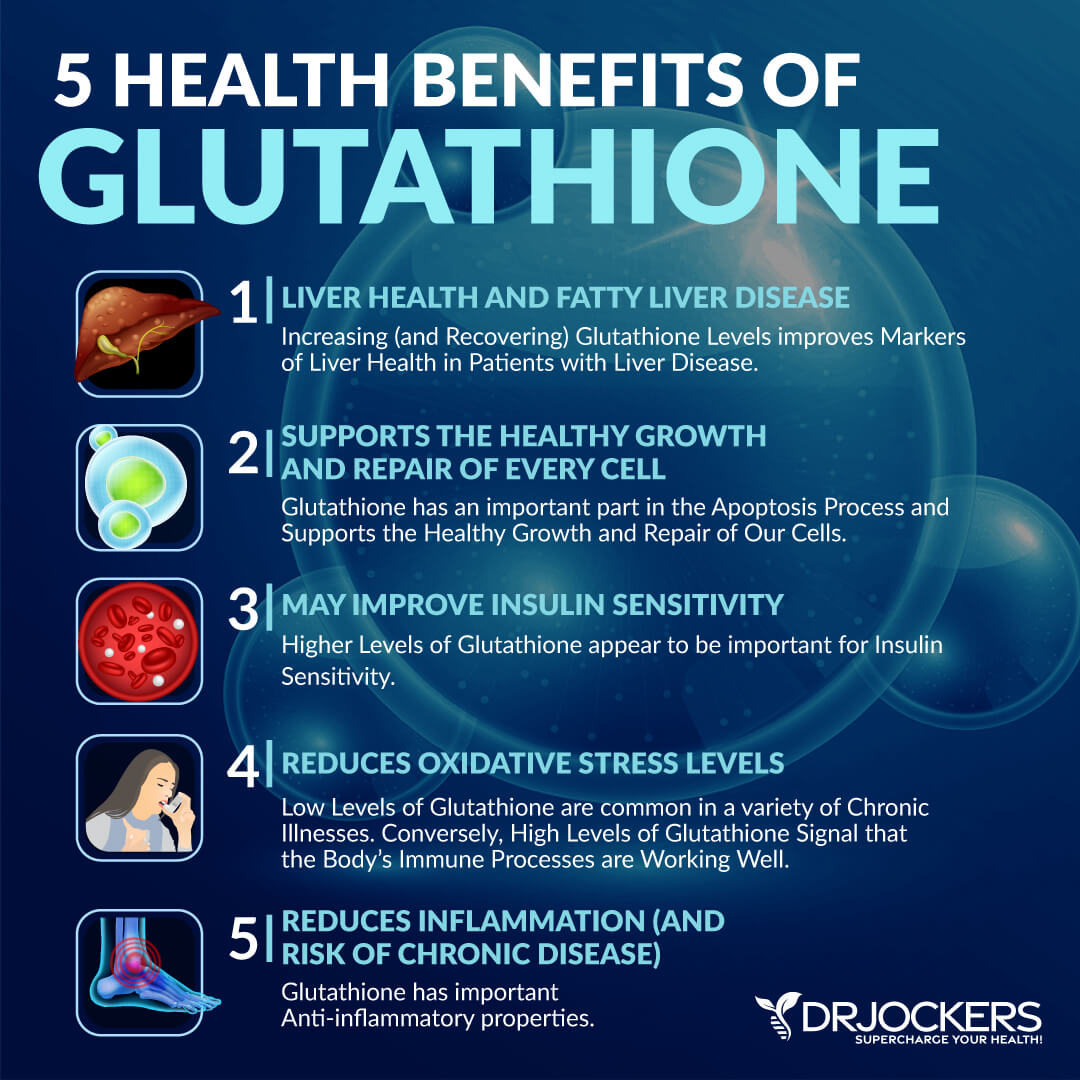
Final Thoughts
High triglycerides are a common health issue that about a quarter of Americans are dealing with. High triglycerides can increase your risk of liver, pancreatic, kidney, and cardiovascular problems. Follow my natural support strategies for high triglycerides to decrease the risk of related health issues and improve your well-being naturally.
If you want to work with a functional health coach, I recommend this article with tips on how to find a great coach. Our website offers long-distance functional health coaching programs with our world-class team of health coaches. For further support with your health and other goals, just reach out—our fantastic coaches are here to support your journey.
Inflammation Crushing Ebundle
The Inflammation Crushing Ebundle is designed to help you improve your brain, liver, immune system and discover the healing strategies, foods and recipes to burn fat, reduce inflammation and Thrive in Life!
As a doctor of natural medicine, I have spent the past 20 years studying the best healing strategies and worked with hundreds of coaching clients, helping them overcome chronic health conditions and optimize their overall health.
In our Inflammation Crushing Ebundle, I have put together my very best strategies to reduce inflammation and optimize your healing potential. Take a look at what you will get inside these valuable guides below!






Dr. Jockers, I purchased your inflammation bundle years ago and I can’t find it in my computer so I will have to purchase it again. My question is can I get booklets instead of email? I can’t underline and highlight anything if its on the computer. Do you have a phone number?
Stella Johnson